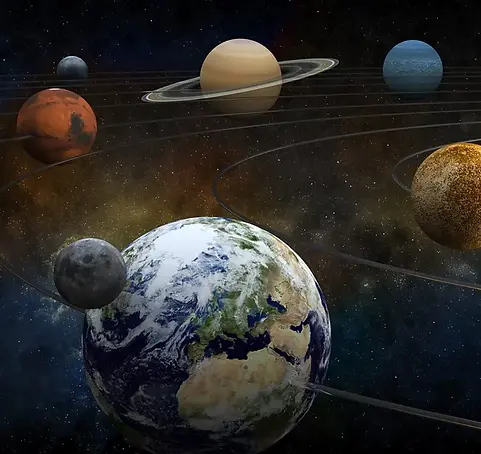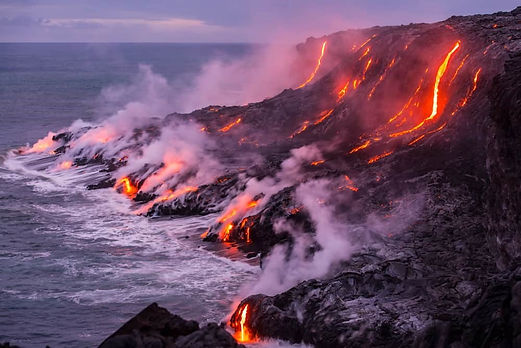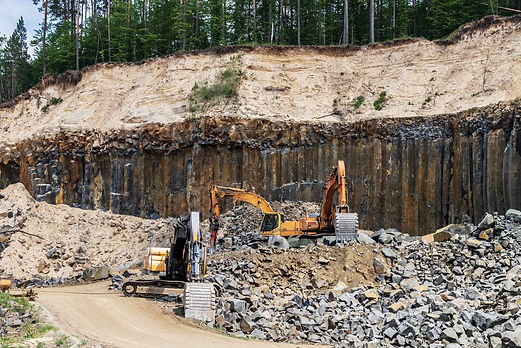

WHAT IS BASALT?
Basalt: A Geological Marvel Extending Beyond Earth:
Basalt, a volcanic rock formed through the solidification of molten lava, stands as a testament to the Earth's dynamic and ever-changing nature. This igneous rock, with its unique properties and widespread distribution, plays a crucial role in shaping landscapes and influencing various geological processes. However, the influence of basalt extends far beyond our planet, reaching the Moon and other celestial bodies within our solar system.
On the Moon, vast expanses of basaltic plains, often referred to as lunar mare, cover significant portions of the lunar surface. These lunar basalt deposits originated from ancient volcanic activity, much like their terrestrial counterparts. The dark, flat plains visible to the naked eye, such as those in the Imbrium, Serenitatis, and Crisium basins, are composed predominantly of basaltic rocks. The Moon's lack of an atmosphere and water means that these basaltic features have remained relatively unchanged for billions of years, preserving a geological record of past volcanic events
Beyond our celestial neighbor:
Basaltic compositions have been identified on various planets and moons within the solar system. Mars, often regarded as the "Red Planet," boasts extensive basaltic plains, such as those found in the Tharsis region. The analysis of Martian meteorites, like those discovered on Earth, further supports the presence of basaltic rocks on the Martian surface. The diverse landscapes of our solar system, from the volcanic plains of Io, one of Jupiter's moons, to the icy plains of Triton, a moon of Neptune, showcase the universal prevalence of basaltic formations. The discovery of basalt on extraterrestrial bodies is not only a testament to the rock's resilience but also provides valuable insights into the geological processes shaping these distant worlds. Studying basaltic compositions beyond Earth allows scientists to unravel the mysteries of planetary formation, volcanic activity, and the evolution of celestial bodies in our solar system.
Back on Earth, the study of lunar and Martian basaltic rocks has practical implications for space exploration. Understanding the characteristics of these rocks helps researchers. design instruments and tools capable of analyzing the compositions of other planets and moons. The comparison between terrestrial and extraterrestrial basalt also deepens our understanding of the broader geological processes influencing the evolution of planetary bodies.
In conclusion, basalt's geological significance transcends the boundaries of Earth, reaching the Moon, Mars, and various celestial bodies within our solar system. Its presence on the Moon and other planets serves as a geological bridge, connecting the study of Earth's rocks to the broader exploration of the cosmos. As we continue to explore the mysteries of our solar system and beyond, basalt remains a universal geological marvel, linking the Earth to the vast and diverse landscapes of the wider universe.

.jpg)

Formation of Basalt:
The genesis of basalt is intimately tied to volcanic activity. As magma rises from the Earth's mantle towards the surface, it undergoes a series of transformations. Typically, basaltic magma, characterized by its low viscosity, high temperature, and silica content, is well-suited for rapid cooling and solidification. When this magma reaches the surface, either through volcanic eruptions or fissure eruptions, it is exposed to lower pressure and temperatures, leading to the formation of basalt.
Basalt's distinctive composition comprises primarily silica, iron, magnesium, and calcium, with minimal amounts of potassium and sodium. The rapid cooling process, often occurring in contact with air or water, results in the formation of fine-grained crystals, contributing to the rock's characteristic texture.
Global Distribution:
Basalt, with its abundance, is a widespread rock found on every continent. However, it is most notably associated with oceanic regions due to the prevalence of underwater volcanic activity. The Mid-Ocean Ridges, expansive underwater mountain ranges, are hotspots for basaltic formation. Here, as tectonic plates separate, magma rises to the surface, solidifying into basalt and forming new oceanic crust.
Additionally, basalt is prevalent in continental regions where volcanic activity has played a significant role in geological history. Volcanic islands, such as Hawaii, Iceland, and the Galápagos Islands, showcase extensive basalt formations. In continental flood basalt provinces, immense lava flows cover vast areas, creating striking landscapes like the Columbia Plateau in the United States and the Deccan Traps in India. Beyond these primary locations, basalt can also be found in various terrestrial environments. It forms part of the Earth's crust, contributing to the composition of diverse geological formations, including basaltic plateaus, lava plateaus, and volcanic plateaus.
Applications and Uses:
Basalt's geological significance extends beyond its role in the Earth's crust; it also has practical applications. The rock's durability and strength make it a valuable material in construction. Crushed basalt aggregates are used in concrete production, enhancing the strength and resistance of the final product. Basalt fibers, derived from the rock's fine-grained structure, find applications in the manufacturing of various products, including textiles, automotive parts, and construction materials.
Environmental Impact:
While basalt itself is not harmful to the environment, volcanic activity, which leads to basalt formation, can have both positive and negative ecological consequences. Volcanic eruptions can release large amounts of gases and ash into the atmosphere, impacting climate and air quality. On the positive side, volcanic soils derived from basalt weathering are often fertile, supporting rich ecosystems and agricultural productivity.
In conclusion, basalt stands as a remarkable geological entity, shaped by the Earth's internal forces and contributing significantly to the planet's physical and environmental landscape. Its formation through volcanic processes and its global distribution makes it a key player in the dynamic interplay of geological forces that continually shape and reshape the Earth's surface. As we continue to explore and understand the intricacies of our planet, basalt remains a fascinating subject that unveils the marvels of Earth's geological history.
